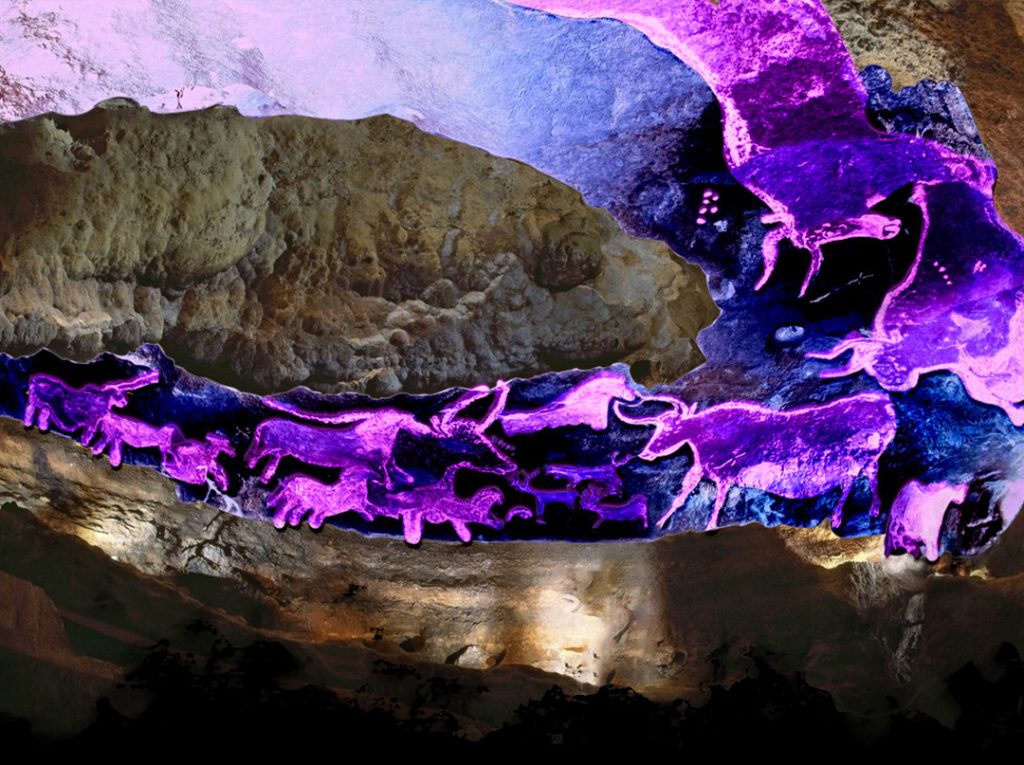
Hunting Magic Hypothesis
The Hunting Magic Hypothesis is a functionalist explanation for why ancient cultures created cave paintings and rock art. One of the most vocal hunting magic proponents was the Abbe Henri Breuil, an expert on Stone age art and the first to identify the use of magic in the prehistoric frescoes of Lascaux Cave, France.
A Remarkably Decorated Cave
Although the engravings still hold many surprises, let us mention, along with numerous deer and horses, oxen and bison, two lions and, it seems, straw huts similar to those of Altamira. Many are the figures carrying magic arrows.
— Henri Breuil, 1940 [1]
Breuil interpreted these paleolithic cave paintings as “sympathetic magic” meant to increase the number of animals one might find during a hunt [2].
Sympathetic Magic in the Old Stone Age
There has been much discussion to determine whether the artists created these works from love of their art, for the mere subjective satisfaction of having produced them, or whether they painted and engraved in order to gain magic powers over the animals they hunted. . .
Prehistoric men thus expressed their fierce desire to meet the herds of stags or ibexes or the swarm of bees they sought, or to conquer their enemies, and so they projected into the future hunting and warlike expeditions still to come. We are therefore led, in spite of the different styles in which they materialized their hopes, to see in such representations the same magic motives that inspired the paintings and engravings in dark caverns where the predominating animal figures are normally independent one of the other.
— Henri Breuil, 1965 [3]
Though the concept of hunting magic is rejected by the majority of researchers today, here’s how the magic might have worked:
Lascaux Drawing of Prey
Mechanism: Sympathetic Magic Culture, Era: Magdalenian, Stone Age Historical Sources: Archaeological Evidence (Lascaux Cave), Modern Speculation (Henri Breuil)
While active, this spell will make it more likely that your search for a target creature is successful [1,2]. Coincidences, luck, and your intuition will all work in your favor during the hunt. At maximum strength, you will be pulled in a straight line towards your target. When the spell is weak, you may only find evidence that your target was previously in the area. The target can be any creature you can draw.
Sympathetic magic is used to link the target creature to the caster [3]. The strength of the spell is proportional to the accuracy, size, and durability of your drawing. Additional actions can be spent making the art larger, more physically accurate, engraved instead of painted, in a hard-to-reach place (i.e. deep in a cave network), all of which make the spell more powerful.
Some surfaces are better than others [4]: if the stone surface used for this spell has any magical properties, then this spell is more powerful. If painting: you can reuse the same surface for multiple casts of this spell without erasing, but the drawn-over spell will be dispelled. A surface can only be etched once.
References
1. Breuil, Henri. “Découverte d’une remarquable grotte ornée, au domaine de Lascaux, Montignac (Dordogne).” Comptes rendus des séances de l’Académie des Inscriptions et Belles-Lettres 84.5 (1940): 387-390.
2. Breuil, Henri. Four Centuries of Cave Art. Dordogne, Centre d’Studes et Documentation Prehistdiriques, 1952.
3. Breuil, Henri, and Raymond Lantier. The Men of the Old Stone Age (palaeolithic & Mesolithic). Harrap, 1965.
4. Campbell, Joseph. The Masks of God. Vol. 1. Primitive Mythology. Vol. 1. Secker & Warburg, 1968.
Art Credits: Modified photograph of the “Hall of Bulls” in Lascaux Cave by Cotton Coulson (The actual paintings are not glowing or purple)